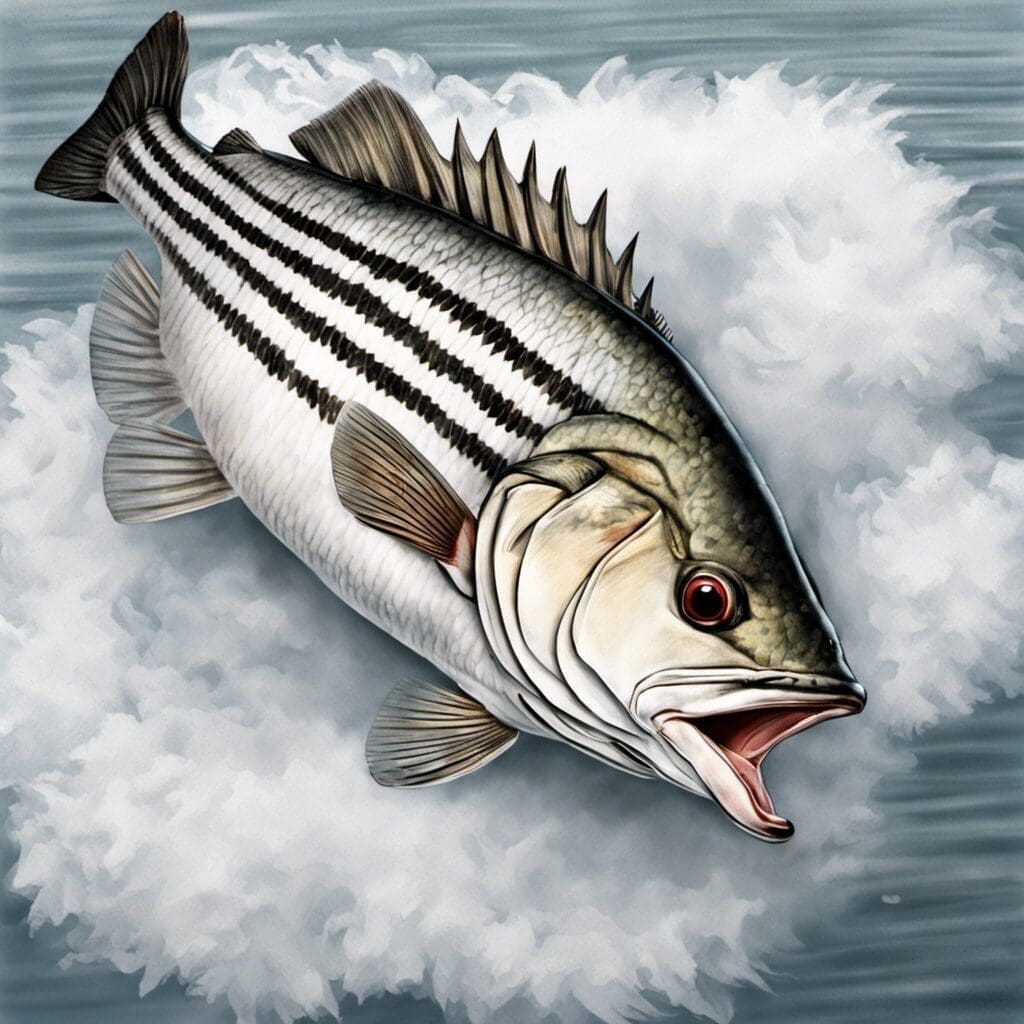Introduction
The White Bass (Morone chrysops) is a freshwater fish of the family Moronidae. This species is native to North America and is known for its sporting quality, making it a favorite among many anglers.
Conservation Status
Although White Bass is not considered endangered or threatened, it is closely monitored for any potential signs of decrease in population. Conservation efforts include stringent fishing regulations and habitat protection and restoration initiatives.
Statistics
The White Bass is an interesting fish in terms of its size and lifespan.
| Average | Range | |
|---|---|---|
| Length | 12 inches (30 cm) | 10-20 inches (25 cm – 40 cm) |
| Weight | 1.2 pounds (0.5 kg) | 1-4 pounds (0.5–2 kg) |
| Average Lifespan | 4–7 years | N/A |
Distribution
The White Bass can be located across North America, predominantly in the United States in large reservoirs and rivers. As for migration, they move upstream to spawn in the spring, returning to deeper waters after spawning season.
Habitats
The White Bass prefers freshwaters of rivers, large streams, and reservoirs. They’re usually found at intermediate depths averaging about 15 feet but can thrive as deep as 100 feet.
When and Where to See
The best time to see White Bass is during their spring spawning run, especially in early morning or late evening. They can also be seen in shallow waters during summer evenings.
Best Fishing Locations
The top places for catching white bass include:
- Lake Powell, Arizona/Utah
- Missouri River, South Dakota/North Dakota
- Devils Lake, North Dakota
- Table Rock Lake, Missouri
- Lake Erie, North America
How to Catch
Effective bait for White Bass includes minnows, jigs, and spoons. Techniques used can vary from fly fishing to trolling. The best time to fish for White Bass is during their spring migration and spawning period.
Identification Guide
White Bass has silver-white bodies and distinct, prominent lines running lengthwise on its body. The White Bass can often be confused with the striped bass, but the striped bass typically grows larger and has a more streamlined body.
Culinary Details
White Bass is known for its mildly sweet, firm flesh and low fat content. Some popular recipes include pan-fried fillets, smoked white bass, and bass chowder.
Predators and Threats
The most common predators of white bass are larger fish, birds, and humans. Pollution and habitat degradation are the biggest human-induced threats.
Additional Information
White Bass are active predators, feeding primarily on smaller fish and invertebrates. During the spawning period, males arrive at the spawning grounds before females, and they engage in aggressive behaviors to establish dominance.
References and Further Reading
- National Oceanic and Atmospheric Administration Fisheries
- FishBase
- Environmental Defense Fund Seafood Selector

